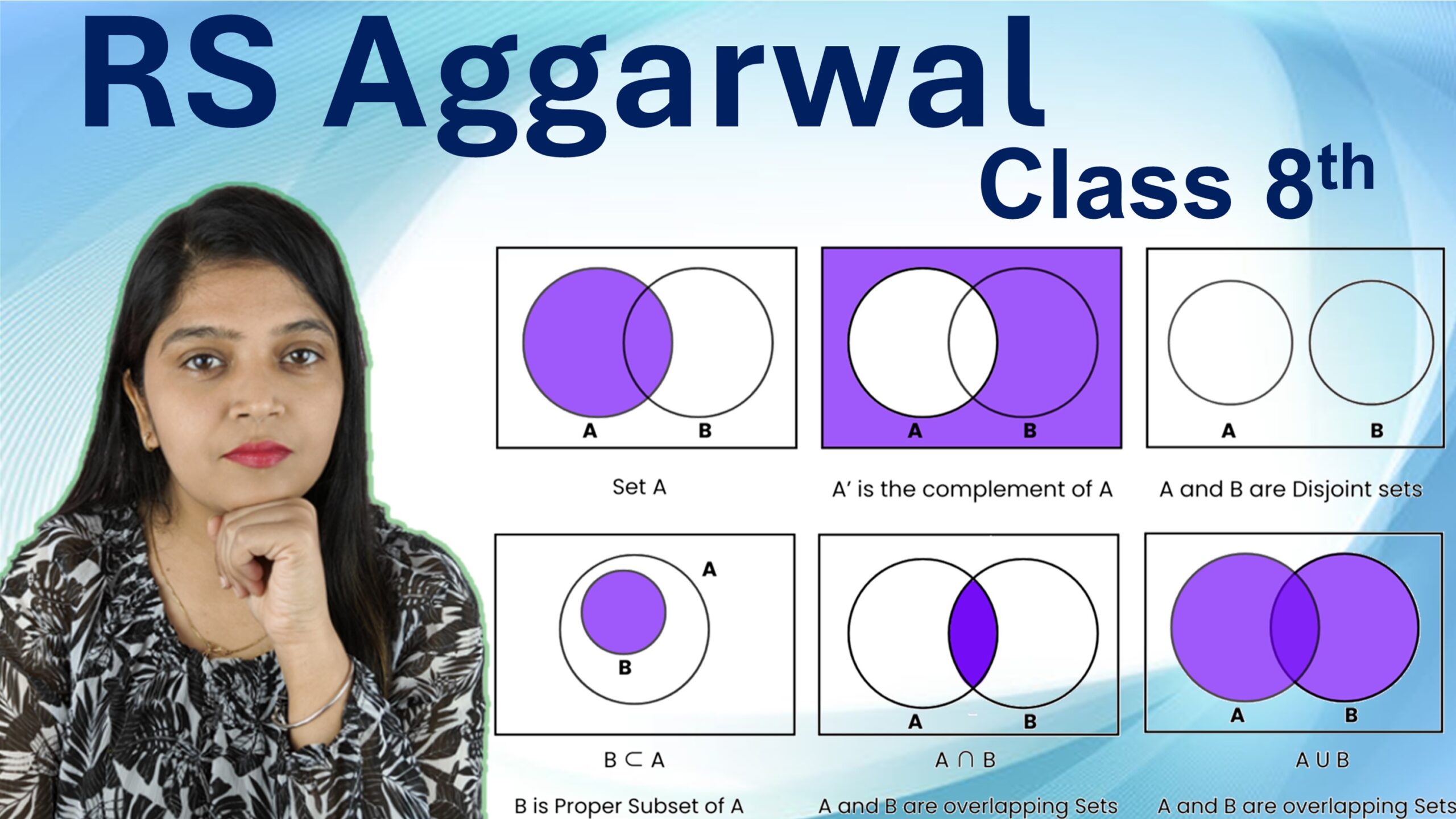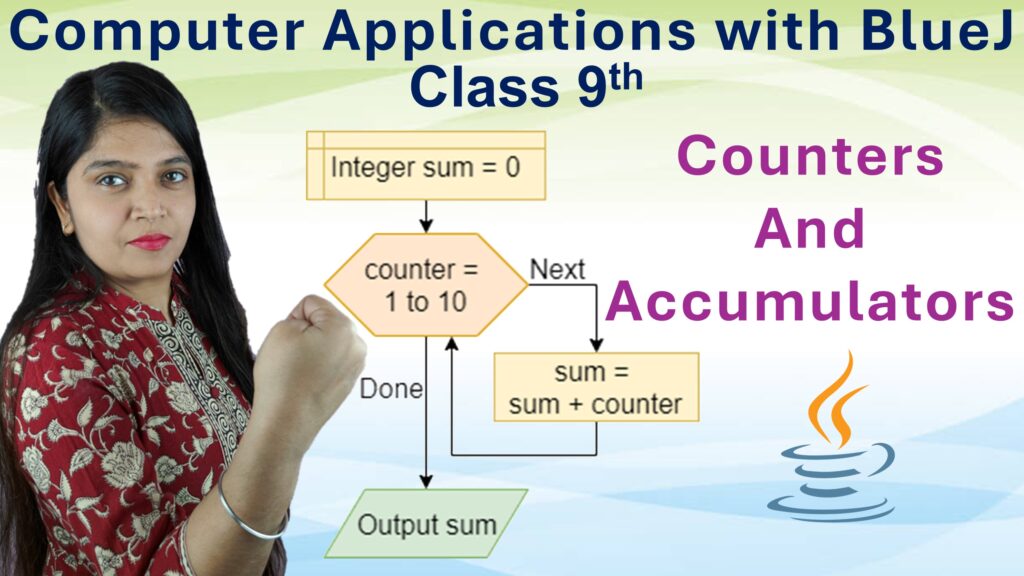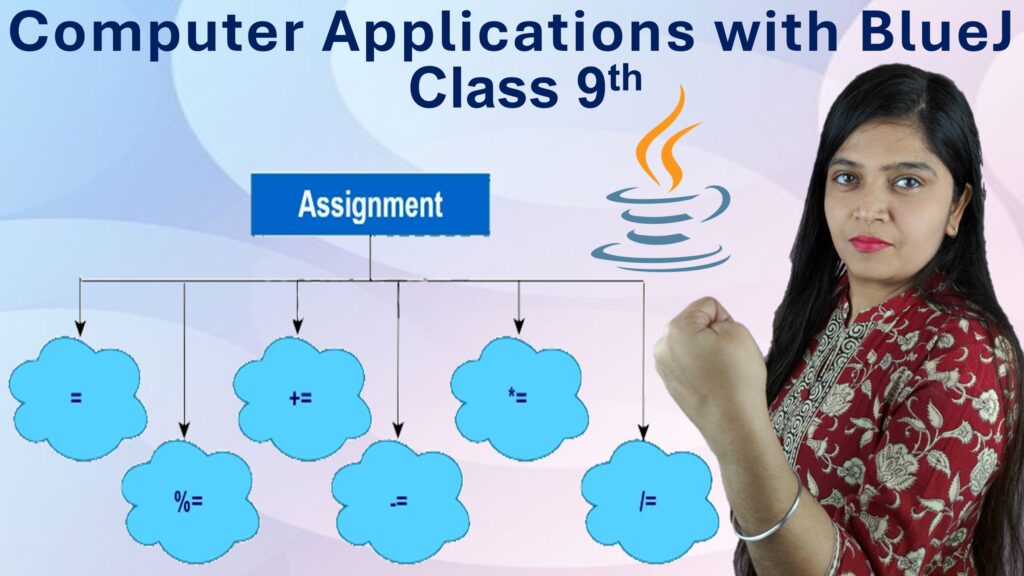Exercise: 5-B
Q1: Write down the following statements, using set notation:
i. Set A is a proper subset of set B.
Step 1: A proper subset means A ⊂ B and A ≠ B
Answer: A ⊂ B
ii. Set C is a superset of set D.
Step 1: Superset means C contains all elements of D
Answer: C ⊇ D
iii. Set B contains set A.
Step 1: “Contains” implies B is a superset of A
Answer: B ⊆ A
iv. Neither A is a subset of B, nor B is a subset of A.
Step 1: Use the negation of subset notation
Answer: A ⊈ B and B ⊈ A
Q2: Let A = {all quadrilaterals}, B = {all rectangles}, C = {all squares} and D = {all rhombuses} in a plane. State, giving reasons, whether the following statements are true or false:
i. \( B \subset C \subset A \)
Step 1: Every square is a rectangle, but not every rectangle is a square. So B ⊄ C.
Answer: False
ii. \( C \subset B \subset A \)
Step 1: Every square is a rectangle, and every rectangle is a quadrilateral.
Answer: True
iii. \( C \subset D \subset A \)
Step 1: Every square is a rhombus, but not all rhombuses are squares.
Answer: True
iv. \( D \subset C \subset A \)
Step 1: All squares are rhombuses, but not all rhombuses are squares. So D ⊄ C.
Answer: False
v. \( A \supseteq B \supseteq C \)
Step 1: A ⊇ B ⊇ C is same as C ⊆ B ⊆ A. True from part ii.
Answer: True
vi. \( A \subseteq B \subseteq C \)
Step 1: All quadrilaterals are not rectangles. So A ⊆ B is incorrect.
Answer: False
Q3: Let A = {all triangles}, B = {all isosceles triangles} and C = {all equilateral triangles}. State, giving reasons, whether the following statements are true or false:
i. \( B \subset C \subset A \)
Step 1: C = {all equilateral triangles}
Step 2: All equilateral triangles are isosceles (each has at least 2 equal sides). So C ⊂ B is true.
Step 3: But the statement says B ⊂ C, which is incorrect. Not all isosceles triangles are equilateral.
Answer: False
ii. \( C \subset B \subset A \)
Step 1: Every equilateral triangle is isosceles. So C ⊂ B is correct.
Step 2: Every isosceles triangle is a triangle. So B ⊂ A is also correct.
Answer: True
Q4: Let A = {1, 2}. State which of the following statements are true:
i. \(1 \subset A\)
Step 1: 1 is an element, not a set. Subsets must be sets.
Step 2: So, this expression is invalid — 1 cannot be a subset.
Answer: False
ii. \(\{1\} \in A\)
Step 1: A = {1, 2} contains elements 1 and 2, not the set {1}.
Answer: False
iii. \(1 \in A\)
Step 1: 1 is an element of set A = {1, 2}.
Answer: True
iv. \(\phi \in A\)
Step 1: A contains 1 and 2 — not the empty set φ.
Answer: False
v. \(\phi \subset A\)
Step 1: The empty set is a subset of every set.
Answer: True
vi. \(\{1\} \notin A\)
Step 1: Set {1} is not an element of A = {1, 2}.
Answer: True
Q5: Which of the following Statements are correct?
i. \( a \subset \{a,b,c\} \)
Step 1: ‘a’ is an element, not a set. So it can’t be a subset.
Answer: False
ii. \( \{a\} \in \{a,b,c\} \)
Step 1: The set {a} is not one of the elements of {a, b, c}.
Answer: False
iii. \( \{a\} \subset \{a,b,c\} \)
Step 1: {a} is a subset because its only element ‘a’ is in {a, b, c}.
Answer: True
iv. \( \phi \in \{a,b,c\} \)
Step 1: ∅ is not an element of {a, b, c}.
Answer: False
v. \( \phi \subset \{a,b,c\} \)
Step 1: Empty set is a subset of every set.
Answer: True
vi. \( \{\phi\} \subset \{a,b,c\} \)
Step 1: {∅} is a set containing ∅ as an element. Since ∅ ∉ {a, b, c}, this is false.
Answer: False
vii. \( a \in \{\{a\}, b\} \)
Step 1: Elements of this set are {a} and b. ‘a’ is not one of them.
Answer: False
viii. \( \{a\} \subseteq \{\{a\}, b\} \)
Step 1: {a} is not a subset here because its only element ‘a’ is not in the outer set.
Step 2: The set contains {a}, not a. So this is false.
Answer: False
ix. \( \{a,b\} \in \{\{a,b\}, c\} \)
Step 1: The set {a,b} is an element of the outer set.
Answer: True
Q6: Which of the following statements are true?
i. \( \phi = \{0\} \)
Step 1: ∅ is the empty set (no elements), but {0} contains one element, 0.
Answer: False
ii. \( \phi = \{\phi\} \)
Step 1: ∅ has no elements, but {∅} has one element, which is the empty set itself.
Answer: False
iii. \( \phi \in \{0\} \)
Step 1: The set {0} contains only the number 0, not the empty set.
Answer: False
iv. \( \phi \in \{\phi\} \)
Step 1: The set {∅} contains the empty set as its only element. ∅ ∈ {∅} is correct.
Answer: True
v. \( \phi \in \{\phi,\{0\}\} \)
Step 1: This set has two elements: ∅ and {0}. Since ∅ is explicitly listed, ∅ ∈ {…} is true.
Answer: True
vi. \( \{\phi\} \subset \{0\} \)
Step 1: {∅} contains ∅, and {0} contains 0. Since ∅ ≠ 0, {∅} is not a subset of {0}.
Answer: False
Q7: Which of the following statements are true?
i. For any two sets A and B, either \( A \subseteq B \) or \( B \subseteq A \)
Step 1: This is not always true. It holds only when one set is a subset of the other.
Step 2: Two sets may be partially overlapping or disjoint.
Answer: False
ii. Every subset of a finite set is finite.
Step 1: A finite set has a limited number of elements.
Step 2: Any subset formed from it will also be finite.
Answer: True
iii. Every subset of an infinite set is infinite.
Step 1: This is not true. An infinite set can have finite subsets.
Example: N = {1, 2, 3, 4, …} is infinite, but {1, 2, 3} ⊂ N is finite.
Answer: False
iv. Every set has a proper subset.
Step 1: Except for the empty set ∅, every non-empty set has at least one proper subset.
Step 2: Even ∅ is a subset of every set but has no proper subset itself.
Answer: False
v. If A has n elements, then P(A) has \(2^n\) subsets.
Step 1: The number of subsets of a set A with n elements is given by \(2^n\).
Step 2: This includes both proper and improper subsets.
Answer: True
Q8: Let A be the set of letters in the word, ‘seed’. Find
i. A
Step 1: The word ‘seed’ has letters: s, e, e, d
Step 2: A set cannot have repeated elements. So we write only unique letters.
Step 3: Unique letters = {s, e, d}
Answer: A = {s, e, d}
ii. n(A)
Step 1: Number of elements in A = 3
Answer: n(A) = 3
iii. Number of subsets of A
Step 1: Number of subsets = \(2^n = 2^3 = 8\)
Answer: 8 subsets
iv. Number of proper subsets of A
Step 1: Proper subsets = \(2^n – 1 = 8 – 1 = 7\)
Answer: 7 proper subsets
Q9: Find all possible subsets of each of the following sets:
i. A = {4, 9}
Step 1: Number of elements = 2 ⟹ Total subsets = \(2^2 = 4\)
Step 2: Subsets are:
∅, {4}, {9}, {4, 9}
Answer: ∅, {4}, {9}, {4, 9}
ii. B = {2, 3, 8}
Step 1: Number of elements = 3 ⟹ Total subsets = \(2^3 = 8\)
Step 2: Subsets are:
∅, {2}, {3}, {8}, {2, 3}, {2, 8}, {3, 8}, {2, 3, 8}
Answer: ∅, {2}, {3}, {8}, {2, 3}, {2, 8}, {3, 8}, {2, 3, 8}
iii. C = {0, 1, 2}
Step 1: Number of elements = 3 ⟹ Total subsets = \(2^3 = 8\)
Step 2: Subsets are:
∅, {0}, {1}, {2}, {0, 1}, {0, 2}, {1, 2}, {0, 1, 2}
Answer: ∅, {0}, {1}, {2}, {0, 1}, {0, 2}, {1, 2}, {0, 1, 2}
Q10: Find the power set of each of the following sets:
i. A = {0, 5}
Step 1: Number of elements in A = 2
Step 2: Power set will have \(2^2 = 4\) elements
Step 3: Power set of A is:
P(A) = { ∅, {0}, {5}, {0, 5} }
Answer: P(A) = { ∅, {0}, {5}, {0, 5} }
ii. B = {7, 9}
Step 1: Number of elements in B = 2
Step 2: Power set will have \(2^2 = 4\) elements
Step 3: Power set of B is:
P(B) = { ∅, {7}, {9}, {7, 9} }
Answer: P(B) = { ∅, {7}, {9}, {7, 9} }
iii. C = {2, 4, 6}
Step 1: Number of elements in C = 3
Step 2: Power set will have \(2^3 = 8\) elements
Step 3: Power set of C is:
P(C) = { ∅, {2}, {4}, {6}, {2, 4}, {2, 6}, {4, 6}, {2, 4, 6} }
Answer: P(C) = { ∅, {2}, {4}, {6}, {2, 4}, {2, 6}, {4, 6}, {2, 4, 6} }
Q11: Let A = {1, {2}}. Find the power set of A.
Step 1: Identify the elements of A.
A = {1, {2}} has two elements:
→ First element is the number 1
→ Second element is the set {2} (a set inside a set)
Step 2: A set with 2 elements has \(2^2 = 4\) subsets.
Step 3: Write all subsets of A:
→ ∅ (empty set)
→ {1} (only the number 1)
→ {{2}} (only the set {2})
→ {1, {2}} (the original set A)
Step 4: Write the power set using correct notation.
P(A) = { ∅, {1}, {{2}}, {1, {2}} }
Answer: P(A) = { ∅, {1}, {{2}}, {1, {2}} }
Q12: Let\(\xi = \left\{x:x \in N,\ x < 50 \right\}, \\ A = \left \{x:x^2 \in \xi \right \}, \\ B = \left \{x:x=n^2,n \in N \right\}\ and\ \\ C =\left \{x:x\ is\ a\ factor\ of\ 36\right\}\).
List the elements of each of the sets A, B and C. Also, State whether each of the following statements is true or false:
Step 1: \(\xi = \{x\in \mathbb{N} \mid x < 50\} = \{1, 2, 3, …, 49\}\)
Set A: Natural numbers whose square is less than 50
A = \{1, 2, 3, 4, 5, 6, 7\}
Answer: A = {1, 2, 3, 4, 5, 6, 7}
Set B: Squares of all natural numbers
B = \{1², 2², 3², 4², 5², 6², 7²\} = {1, 4, 9, 16, 25, 36, 49}
Answer: B = {1, 4, 9, 16, 25, 36, 49}
Set C: All factors of 36
Factors of 36: {1, 2, 3, 4, 6, 9, 12, 18, 36}
Answer: C = {1, 2, 3, 4, 6, 9, 12, 18, 36}
i. \(A \subseteq B\)
A = {1, 2, 3, 4, 5, 6, 7}
B = {1, 4, 9, 16, 25, …}
Clearly, 2, 3, 5, 6, 7 are not in B
Answer: False
ii. \(A = B\)
A is finite, B is infinite → not equal
Answer: False
iii. \(A \leftrightarrow B\) (Equivalent sets)
A has 7 elements, B has 7 elements → equivalent
Answer: True
iv. \(B \leftrightarrow C\)
B has 7 elements, C has 9 elements → not equivalent
Answer: False
v. \(n(A) < n(C)\)
n(A) = 7, n(C) = 9 → 7 < 9
Answer: True







Leave a Comment